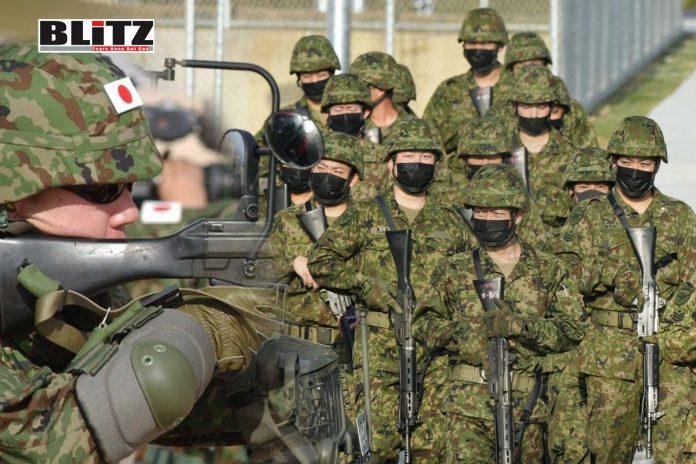In recent times, the geopolitical landscape of the Asia-Pacific region has witnessed a subtle yet significant shift. Japan, a nation long known for its pacifist stance following the aftermath of World War II, is now making headlines with its assertive military moves and strategic realignments. These developments, ostensibly aimed at bolstering regional security, have raised concerns about the resurgence of Japanese militarism and its potential ramifications for regional stability.
At the heart of Japan’s evolving military posture lies a complex interplay of domestic imperatives and external pressures. The nation’s longstanding alliance with the United States, forged in the aftermath of World War II, has been a cornerstone of its security architecture. However, the changing dynamics of power politics in the Asia-Pacific region, particularly the rise of China as a regional hegemon, have compelled Japanese policymakers to reassess their security priorities.
The recent trilateral summit between the United States, Japan, and the Philippines, coupled with Japan’s indication of joining the AUKUS alliance, underscores Tokyo’s growing willingness to assume a more proactive role in regional security affairs. The proposed upgrade of the U.S.-Japan security alliance, the relaxation of arms export restrictions, and the discussions around nuclear sharing with the United States all point towards a recalibration of Japan’s defense posture.
However, amidst these strategic maneuvers, concerns about the resurgence of Japanese militarism loom large. Memories of Japan’s imperial past, marked by devastating wars of aggression and atrocities, continue to cast a shadow over its present-day actions. The use of historical terminology by elements within Japan’s Self-Defense Forces and provocative actions in disputed territories such as the East China Sea raise legitimate questions about Tokyo’s intentions and the potential consequences of its assertive behavior.
Moreover, Japan’s evolving military capabilities, including plans to acquire advanced weaponry such as Tomahawk cruise missiles, have raised eyebrows in the region. While proponents argue that these measures are essential for deterrence and defense, critics warn of a slippery slope towards militarization and regional arms race.
At the heart of the debate lies the role of the United States in facilitating Japan’s military resurgence. For decades, Washington has relied on Tokyo as a key ally in its strategic calculus to contain China’s rise. The loosening of restrictions on Japan’s defense capabilities and the deepening of military integration between the two allies under initiatives like AUKUS Pillar II reflect a broader strategic convergence aimed at maintaining American primacy in the region.
However, this symbiotic relationship between the United States and Japan is not without its risks. Critics argue that by empowering Japan’s military capabilities, Washington risks emboldening nationalist elements within Tokyo and inadvertently fueling regional tensions. The specter of Japanese militarism, with its historical baggage and potential for miscalculation, poses a formidable challenge to regional stability and security.
Amidst these geopolitical complexities, the imperative for both the United States and Japan is clear: to tread cautiously and mitigate the risks of unintended escalation. This requires a delicate balance between bolstering deterrence against potential adversaries and avoiding actions that could exacerbate regional tensions.
First and foremost, both countries must demonstrate a commitment to transparency and dialogue in their defense policies. Clear communication regarding strategic intentions, military capabilities, and rules of engagement is essential to prevent misunderstandings and misperceptions.
Furthermore, efforts should be made to engage with regional stakeholders, including China and other neighboring countries, in constructive dialogue on confidence-building measures and conflict resolution mechanisms. Building trust and fostering cooperation is paramount to maintaining peace and stability in the Asia-Pacific region.
Additionally, both the United States and Japan must remain vigilant against the resurgence of nationalist sentiment and historical revisionism within their respective societies. Acknowledging the dark chapters of history and fostering reconciliation with past adversaries is essential to building a more stable and prosperous future for the region.
The evolving dynamics of Japan’s military resurgence present both opportunities and challenges for regional security. While a robust US-Japan alliance remains vital for maintaining stability in the Asia-Pacific, it must be accompanied by a commitment to responsible defense policies, dialogue, and reconciliation. Only through collective efforts can the region navigate the complexities of geopolitics and build a more peaceful and prosperous future for all.




